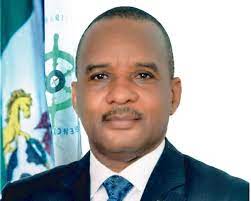The Federal Government will this week disburse $350m cabotage funds with the inauguration of the special committee by the Minister of Finance, Budget and National Planning, as 11 banks have already been shortlisted for the purpose.
Director General of the Nigerian Maritime Administration and Safety Agency (NIMASA), Bashir Jamoh gave the indication during a Presidential Media chat anchored by the Presidential Communications team at the State House, Abuja.
The Cabotage Vessel Financing Fund (CVFF) is an intervention fund specifically created to help develop indigenous shipping capacity in Nigeria.
Jamoh disclosed that 11 banks have so far been listed to disburse the fund, sourced from a two per cent contribution by indigenous ship owners from every contract executed in the nation’s waters.
According to him, the disbursement of the CVFF is backed by the provisions of Section 42(1)-(2) of the Cabotage Act 2003, enacted to promote the development of indigenous ship acquisition capacity by providing financial assistance to Nigerian operators in domestic coastal shipping.
Jamoh lamented the absence of indigenous fleets, just as he said the disbursement of the funds will not only enhance local shipping business but also assist in creating jobs for the over 2041 Nigerian Seafarers trained by the Agency.
He disclosed that NIMASA has trained about 2041 Seafarers in various institutions overseas, and of these number, over 800 have secured various jobs with other shipping companies abroad.
“We are unable to retain them here, due to the absence of fleets to provide jobs for them in Nigeria, after their training overseas. One vessel can employ up to 40 of them. The shipping business is capital intensive, thus government need to give a helping hand to potential ship owners. We need them to feed into our own system if the fleets are available.
Shedding light on the payment of ‘War Risk Insurance’ imposed on shipments of goods into Nigeria, the DG stated that NIMASA was working to exit Nigeria from such charges, following safety recorded at the Gulf of Guinea, adding that efforts had begun to ensure that shipments of goods and services to Nigeria from Europe no longer attract ‘War risks insurance.’
He revealed that payment of war risks insurance had been going on for 25 years following insecurity in the Gulf of Guinea, but noted that with the recent safety record in the region, ships coming into Nigeria waters don’t need to pay such risks.
Specifically, War Risk Insurance is a type of insurance, which covers damage due to acts of war including invasion, insurrection, rebellion and hijacking, which is commonly used in the shipping industry.
He explained that there are three basic insurance charges, including war risk insurance, insurance on the valuables on the ship and personnel insurance for workers on the ship.
According to him, these were the three key elements, which we ought not to be paying, as they are responsible for 90 per cent increase in prices of goods and services imported into Nigeria.
“They have commended NIMASA for the security recorded in the Gulf of Guinea and we are waiting for the report from the Lloyds of London and very soon, we hope to exit this insurance.”
Speaking on NIMASA’s achievements, he disclosed that the agency remitted N30b into the federation account in the first half of 2022.
He said security in the Gulf of Guinea had been largely aided by the deep blue project, adding that, “the Gulf of Guinea has recorded zero attacks since the last quarter of 2021 to date. We have not experienced any attacks in Nigeria since the last quarter of 2021 to date which was why they have removed us from the piracy list.”
He further disclosed that the agency has five vessels and ordered seven new ones with wrecks removal contractors on site removing wrecks.
“Under the deep blue project, the agency acquired 2 special mission vessels, three special mission helicopters, 16 armoured vehicles that can enter the creeks, two special mission aircraft, 17 special interceptors, four unmanned air surveillance for data transmission for possible intervention, 600 specially trained forces to respond to threats on the high sea.”










